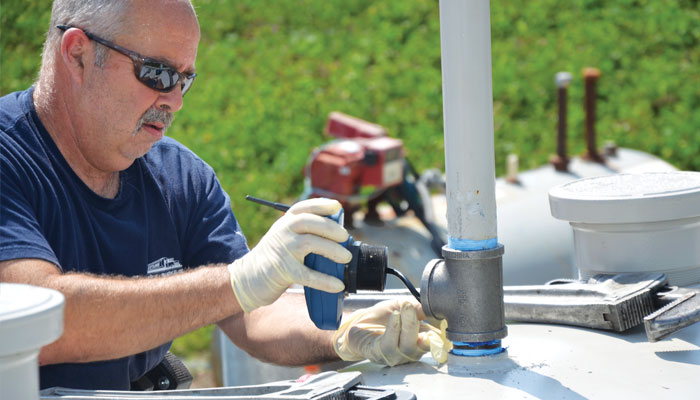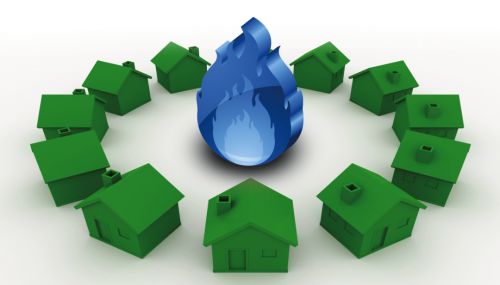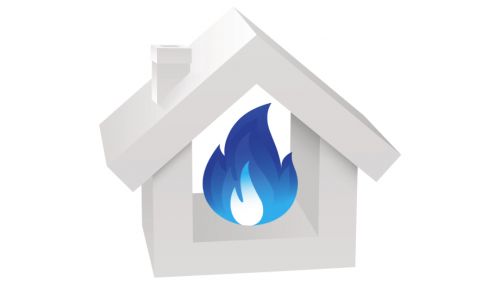All
Better Tank Data Drives Better Fuel Management
by Ed Burke, Dennis K. Burke Inc.

Accounts require fewer deliveries, and customers can stop checking tanks
We get a lot of “thumbs up” from our tank monitoring accounts.
The big value for customers is that they no longer have to worry about ordering fuel or running out. For the guy who manages the fuel, tank monitoring is a real convenience. Now he doesn’t have to go out in the back yard each day to check gauges or stick the tank. He can go online to check the usage from anywhere, with far more usage data than his own tank equipment provides. And he finally gets to relax when he goes away on vacation.
There is a big plus side for the fuel dealer too. With better data from the tanks, we can plan delivery schedules and routes more efficiently, we make fewer partial fills, and end up with fewer retains.
Better Tank Insight
We typically have most of our tanks report twice a day, at 4 a.m. and 4 p.m. The morning dispatcher gets a chance to review the tank levels, and they’re checked again when the night dispatcher comes in. For us, that’s enough to get a good feeling for volume and how much product each customer is going through, or any spikes in usage.
There are some tanks where the usage is much higher and requires closer monitoring. We might have them report five or six times a day, depending on what the volume is, and how fast they’re going through product.
You can set a low level alert and a critical low level alert for the tank, which sends an e-mail or text alert to your dispatchers indicating that the tank needs attention. We try to set the alerts so that if the dispatcher gets a low level alert, they have time to schedule and make the delivery before the critical low level alert is triggered.
The online screens are pretty easy to use, and you get some great spreadsheets. They tell you what product is in the tank and how many gallons per day they’re using. It also shows you the daily usage for the seven-day period, and a 35-day period, so you can get a feeling for the more immediate and a longer-term view. You can also determine whether your deliveries are hitting the tank’s delivery size target.
One neat feature our monitoring system offers is worth mentioning: It can pull data from a Veeder Root system and transmit that data to the website.
Which Tanks to Monitor
A lot of accounts are fairly ratable and really don’t need monitoring. So which accounts should you consider monitoring? Tanks with high usage are worth monitoring. You might also want to monitor accounts with irregular fueling patterns. A good example is a marina that typically does low volume during the week and heavy volume on the weekend. You might want to consider pushing data at more frequent intervals to get a more accurate view of volume levels during peak periods.
It would be great to have tank monitoring on all of our customers’ tanks, but the reality is that some sites don’t do the volume to justify the monthly fee and equipment expense.
More Timely Deliveries
With tank monitoring, we can deliver the same amount of gallons with fewer trips to the site. With time-based deliveries, we would typically be filling the tank about 50 percent of capacity. Using remote tank monitoring, we would probably average closer to 75 percent fills with fewer deliveries. That can translate into reduced overall delivery costs with less paperwork—and fewer phone calls and faxes too.
Fewer Retains
With tank monitoring, dispatchers can use accurate tank data to better schedule and optimize your deliveries to the site. Your delivery vehicle brings the right amount of product at the right time.
Tank monitoring data gives dispatchers a much more accurate view of how much product to load up at the rack and avoid retains. It’s also a great tool when you’re trying to deal with product retains left on the truck. Our dispatchers can go on the screen, type in the product and vicinity, and it comes back with accounts in that area that can use that product.
Bad Weather Ahead
When storms are approaching, tank monitoring definitely helps us get an early jump on preparations. We can plan deliveries earlier, so we can handle the true emergencies on the day before the storm. It’s also worth noting that the unit continues to transmit data to the website during power outages.
Keeping Customers Happy
Once we get a monitor on an account, we’re able to blend into the background of their daily operation. They don’t have to worry about checking tanks or ordering fuel. We just show up with fuel, and they never run out.
Customers can access tank data through a secure, password-protected website that can be accessed from virtually anywhere. They can view data that would include tank level information, product usage, fill history, etc.
At the end of the day, it’s all about improving our service, and keeping our customers happy.
Related Posts
 The Possibilities of Renewable Propane
The Possibilities of Renewable Propane
Posted on March 13, 2024
 Propane Can Do That
Propane Can Do That
Posted on March 12, 2024
 Take Action and Take Control of Your Future at Industry Summit VI and Visions ‘24
Take Action and Take Control of Your Future at Industry Summit VI and Visions ‘24
Posted on March 11, 2024
Enter your email to receive important news and article updates.

